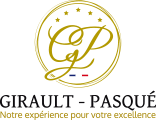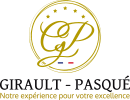In a sector where customer demands, regulations and competition are constantly increasing, achieving true excellence in catering requires a solid quality audit.
But what does it actually mean to “pass a quality audit”? What are the levers, trends, and pitfalls to avoid? Here’s a detailed guide to help you.
Why a quality audit is essential
- Customer satisfaction: A well-conducted audit allows you to detect points of friction (service, atmosphere, cleanliness, taste, etc.) before they become visible criticisms.
- Regulatory and hygiene compliance: Health standards, food safety, traceability, etc. are no longer optional.
- Operational optimization: Better organization, reduction of waste, fluidity of processes.
- Brand image & reputation: A restaurant that communicates about its audits/quality inspires confidence.
- Competitive intelligence: Stay at the level of – or even above – market standards, and integrate innovations.

Key steps to a successful quality audit
Here are the essential phases of a restaurant quality audit, with concrete actions:
| Stage | Goals | Recommended actions |
|---|---|---|
| 1. Preparation | Put yourself in real conditions, frame the audit | Define the criteria (hygiene, service, product, reception, decor), choose the type of audit (internal/external/mystery shopper/anonymous), prepare the documents, train staff on what will be audited. |
| 2. Audit of health and food safety standards | Ensure compliance with regulations (e.g. HACCP, PMS, local standards) | Check the Health Control Plan, the hygiene of the premises, equipment, flows, temperatures, the cold chain, and the traceability of ingredients. Use surprise checks for realism. |
| 3. Quality control of products and suppliers | Guarantee that raw materials match promises (origin, freshness, quality) | Check technical data sheets, suppliers, internal controls, dates, and packaging. Incorporate sustainability criteria or labels if relevant (organic, local, fair trade). |
| 4. Evaluation of service & customer experience | Measure how the customer feels from start to finish | Observe the reception, order taking, speed of service, presentation, staff attitude, decor, sound and visual ambiance. The mystery shopper is very useful here. |
| 5. Cooking process & menu consistency | Check the consistency between what is offered and what is served | Check compliance with recipes, cooking, presentation, consistency of the menu (balance, seasonality), presentation. Detect discrepancies between the menu and reality. |
| 6. Hygiene & maintenance / safety of infrastructure | Ensure a healthy and safe environment | Cleanliness of premises, waste treatment, equipment maintenance, lighting, ventilation, accessibility, fire safety. |
| 7. Sustainability / Social Responsibility | A criterion increasingly expected by customers and partners | Waste management, packaging, eco-responsible practices, local sourcing, energy efficiency, reduction of food waste. |
| 8. Reporting & action plan | Transforming observations into concrete actions | Clear, quantified reports, with photos if possible; prioritize corrections (urgent/important), set deadlines, identify those responsible, set up follow-up. |
Trends & new developments for 2025 to integrate into the quality audit
To stay ahead, here’s what to watch for today:
Digitalization & Automation
- Use of digital tools to track stocks, temperatures, traceability.
- All-in-one systems (POS, CRM, online order management) that provide real-time data to measure performance.
Immersive & personalized customer experience
- Sensory atmospheres (lighting, sound, decor), design of the place, more personalized interactions.
- High-end delivery, menus optimized for transport, quality packaging.
Sustainability & transparency
- Local/seasonal sourcing, reducing food waste.
- Transparency on suppliers, labels, certifications, eco-responsible practices.
Reinforced standards, formalizations and certifications
- Updated health control plans (PMS), regular audits.
- Internal quality standards (ISO, or equivalent), internal and external audit.


Pitfalls to avoid
- Superficial audit: just do a “quick tour” without checking consistency over time.
- Lack of follow-up of actions: identifying defects is useless if corrective measures are not implemented.
- Lack of objectivity: internal audit without perspective or external audit without transparency distorts reality.
- Do not involve the team: staff must understand the criteria, be trained and committed.
- Ignore customer feedback: you need to listen to opinions and feedback, and test the experience as a typical visitor would.
Practical case: Example of a successful audit
Voici un scénario fictif mais réaliste pour illustrer :
Here is a fictional but realistic scenario to illustrate:
Restaurant: gourmet bistro in Paris.
Preparation: definition of a mystery shopper audit + internal PMS audit + supplier audit.
Findings:
- The “dish of the day” does not follow the recipe displayed (missing quantity or garnish).
- Temperature control problems in refrigerated storage.
- Friendly welcome but order taking times too long at peak times.
- Non-recyclable delivery packaging.
Actions:
- Revised recipe, staff training, clear technical sheets.
- Installation of connected thermometers + daily verification procedure.
- Review staffing at peak times, optimize the room dispatch process.
- Partnership with recyclable packaging supplier.
Expected results: improved audit score, better customer satisfaction (opinions, loyalty), reduced waste, compliance with standards.

To successfully pass the quality audit, show your commitment and involvement.
Passing a quality audit is much more than just checking boxes: it’s a comprehensive commitment to excellence. For a restaurant, this requires rigor, anticipation, investment in modern tools, but also human touch: welcome, service, consistency.
By integrating current trends (digitalization, sustainability, immersive customer experience) and avoiding classic pitfalls, any establishment can become a recognized Destination of Excellence .

